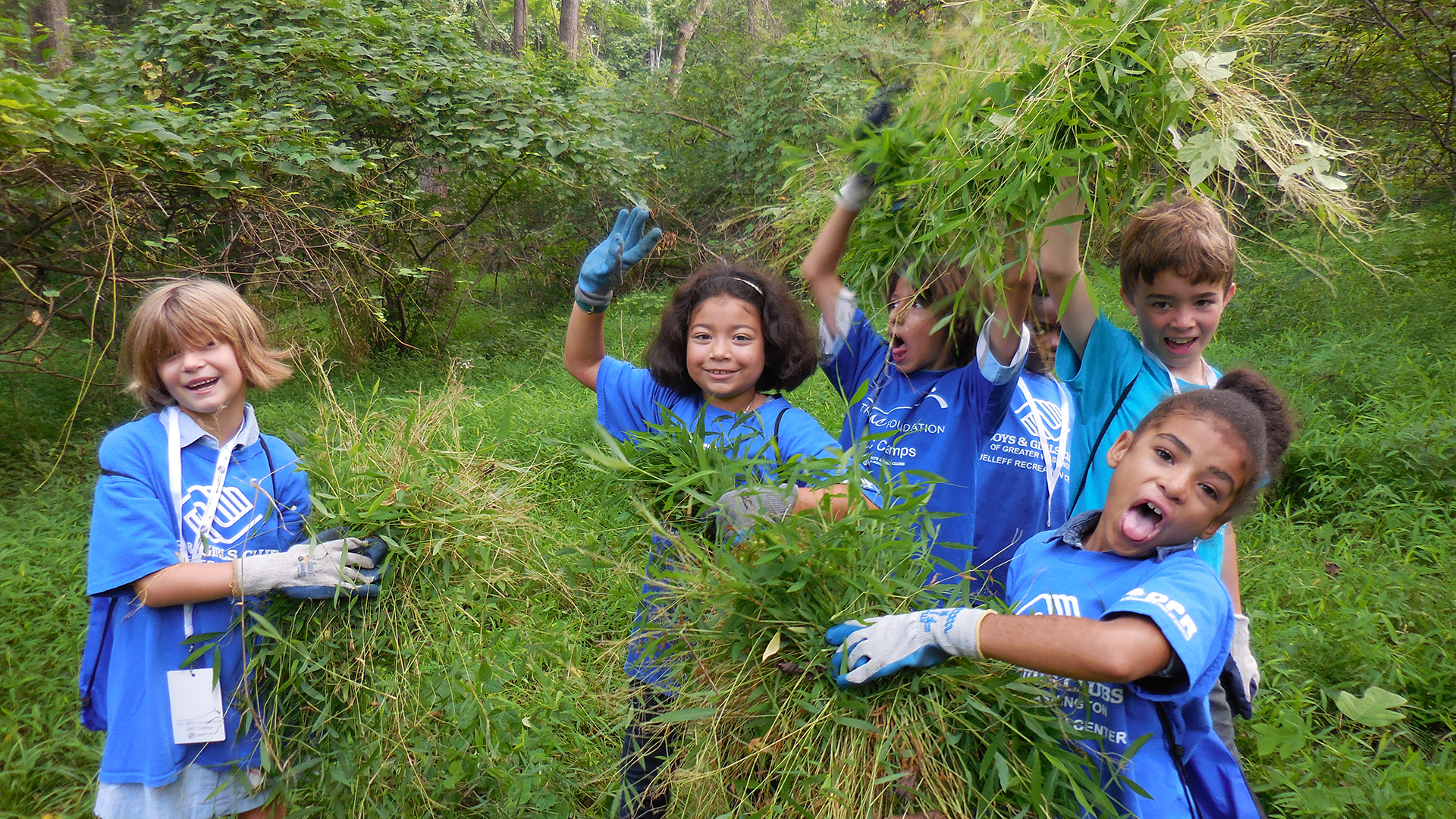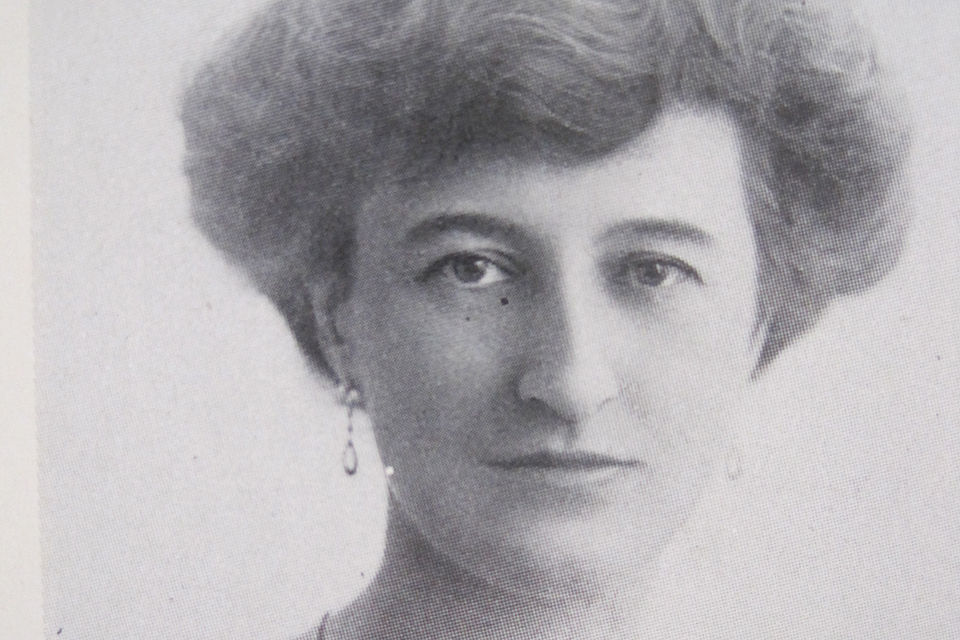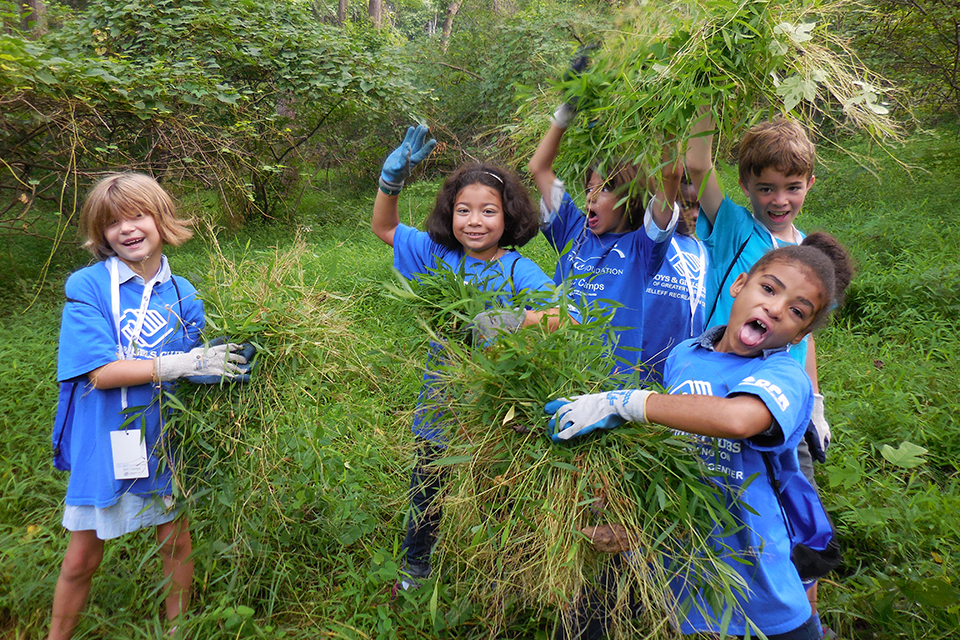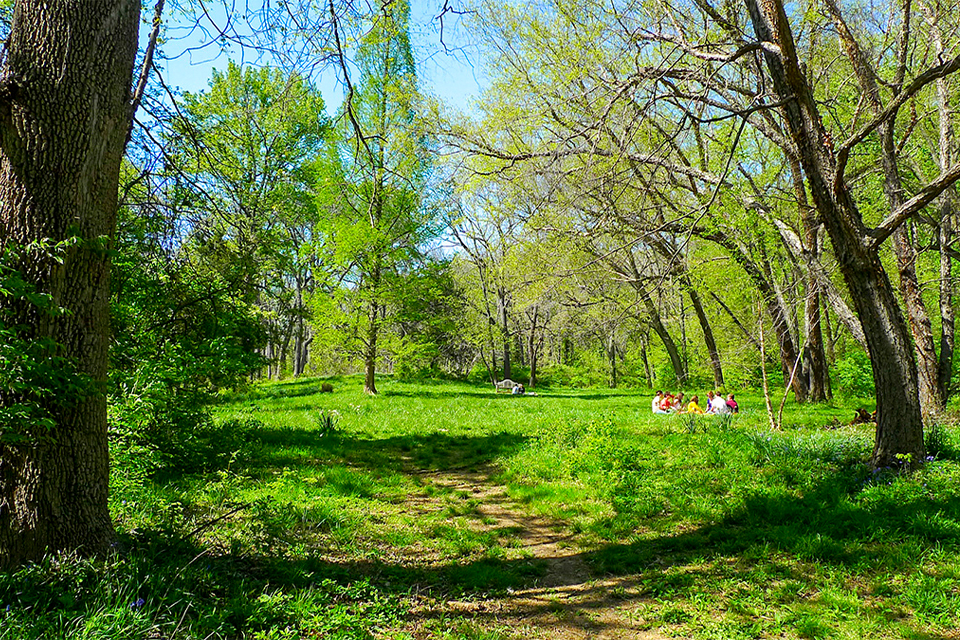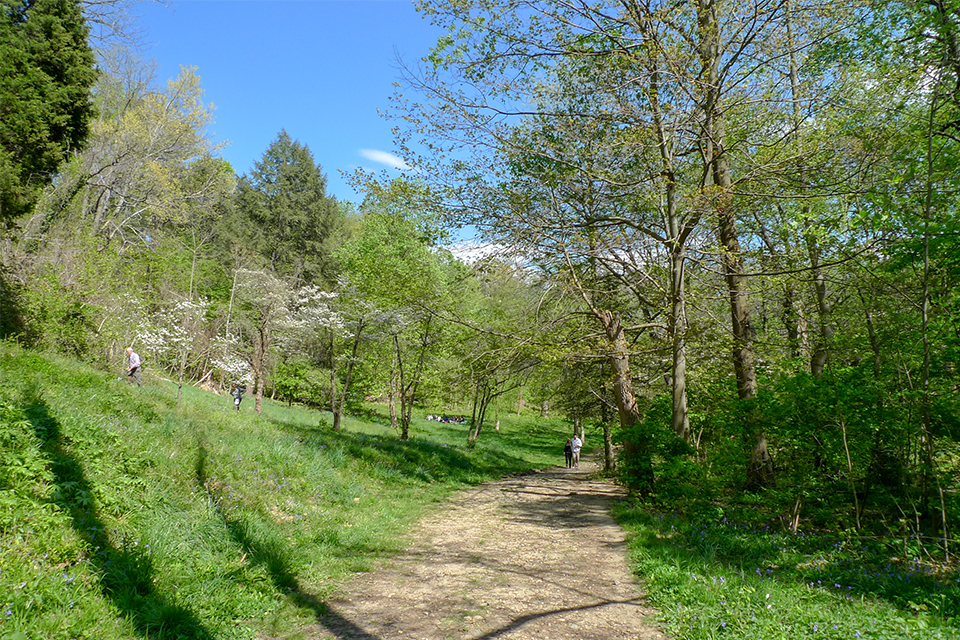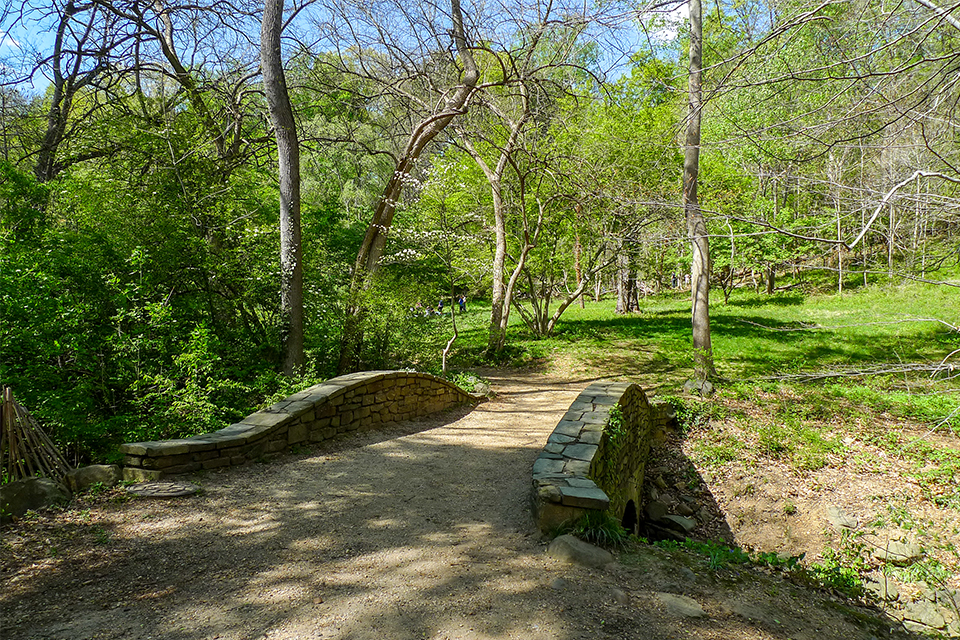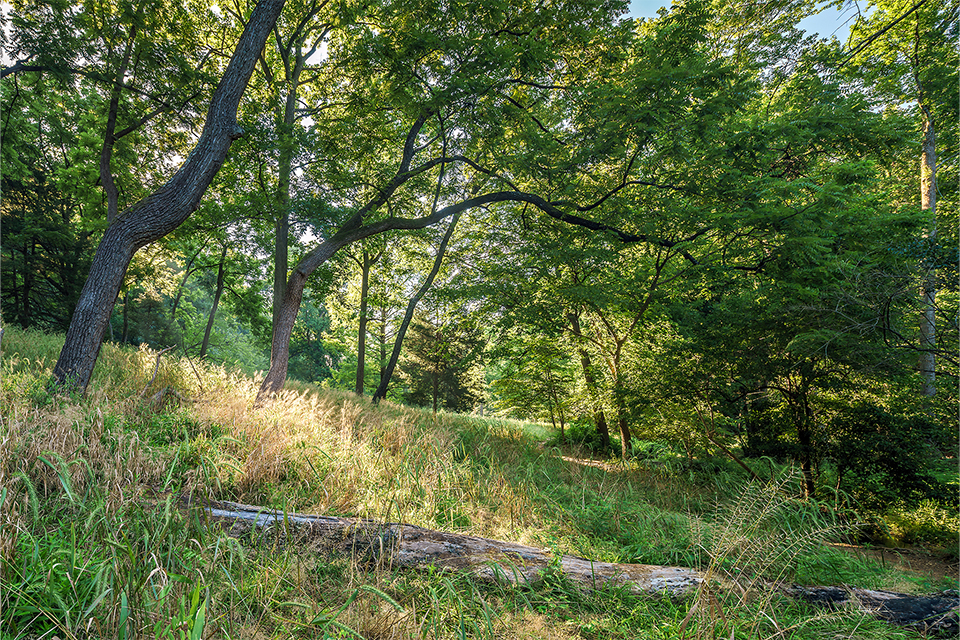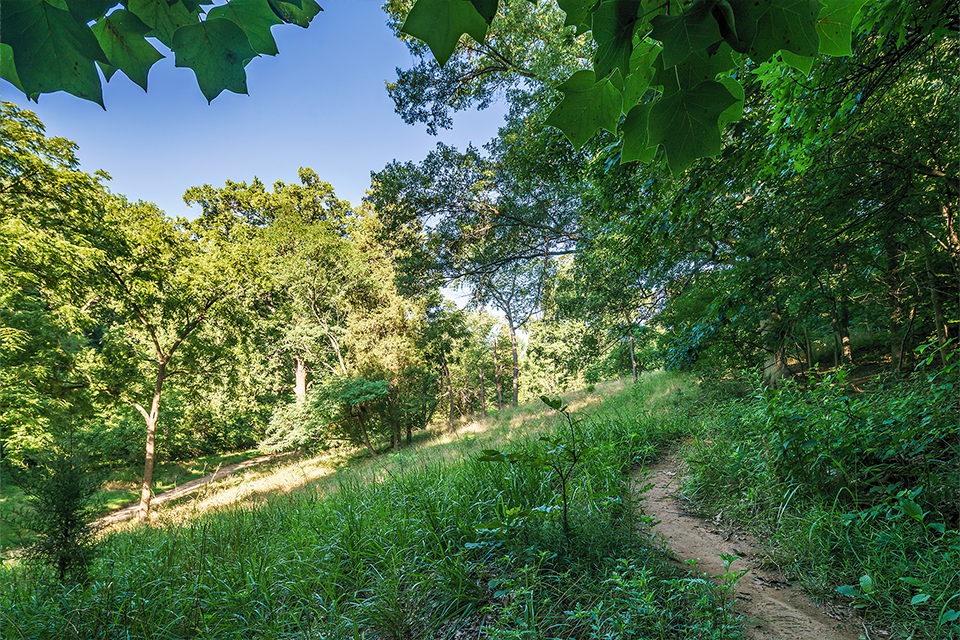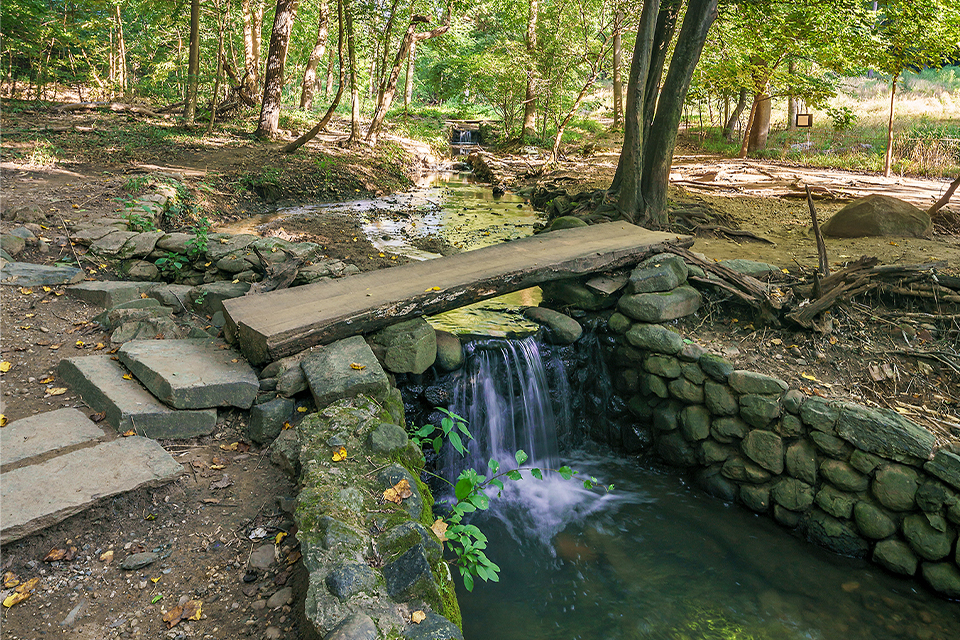A 27-acre pastoral oasis in the middle of Washington, D.C.’s Georgetown neighborhood, Dumbarton Oaks Park is the woodland and meadow portion of Mildred and Robert Bliss’ original 53-acre Dumbarton Oaks estate. This quintessential wild garden of the Country Place Era (along with Dumbarton Oaks) is the masterwork of Beatrix Farrand’s 50-year career and is her only remaining wild landscape – the result of a decades-long partnership with her client, Mildred Bliss.
Background
Farrand, the only woman founding member of the American Society of Landscape Architects (ASLA) in 1899, was raised in an upper-class, literary New York family; Edith Wharton was her aunt. Over the course of her distinguished career as a landscape gardener, the title she preferred, Farrand completed more than 200 designs, including university plans (Yale, Princeton, Chicago, Occidental) and a garden at Woodrow Wilson’s White House.
Mildred Bliss, a prominent member of Washington, D.C., society, and her husband Robert Bliss, a diplomat, purchased a house in Georgetown in 1921, and hired Farrand to design both a formal flower garden and a Naturalistic adjoining park. Farrand’s work for the couple lasted two decades, during which time she and Mildred, who called one another “gardening twins,” worked together closely, though often only through written correspondence as Robert’s work took the couple out of the country, and Farrand was first based in Reef Point, Maine, and, after 1928, in Montecito, California.
The Bliss estate work was inspired by the classical Roman tradition of creating living spaces out-of-doors. For the upper formal gardens (now known as Dumbarton Oaks and administered by Harvard University), Farrand designed garden rooms for entertaining, as well as recreation areas that included a swimming pool and tennis courts. The property had complex topography and significant grade changes, demanding concerted focus on engineering by Farrand.
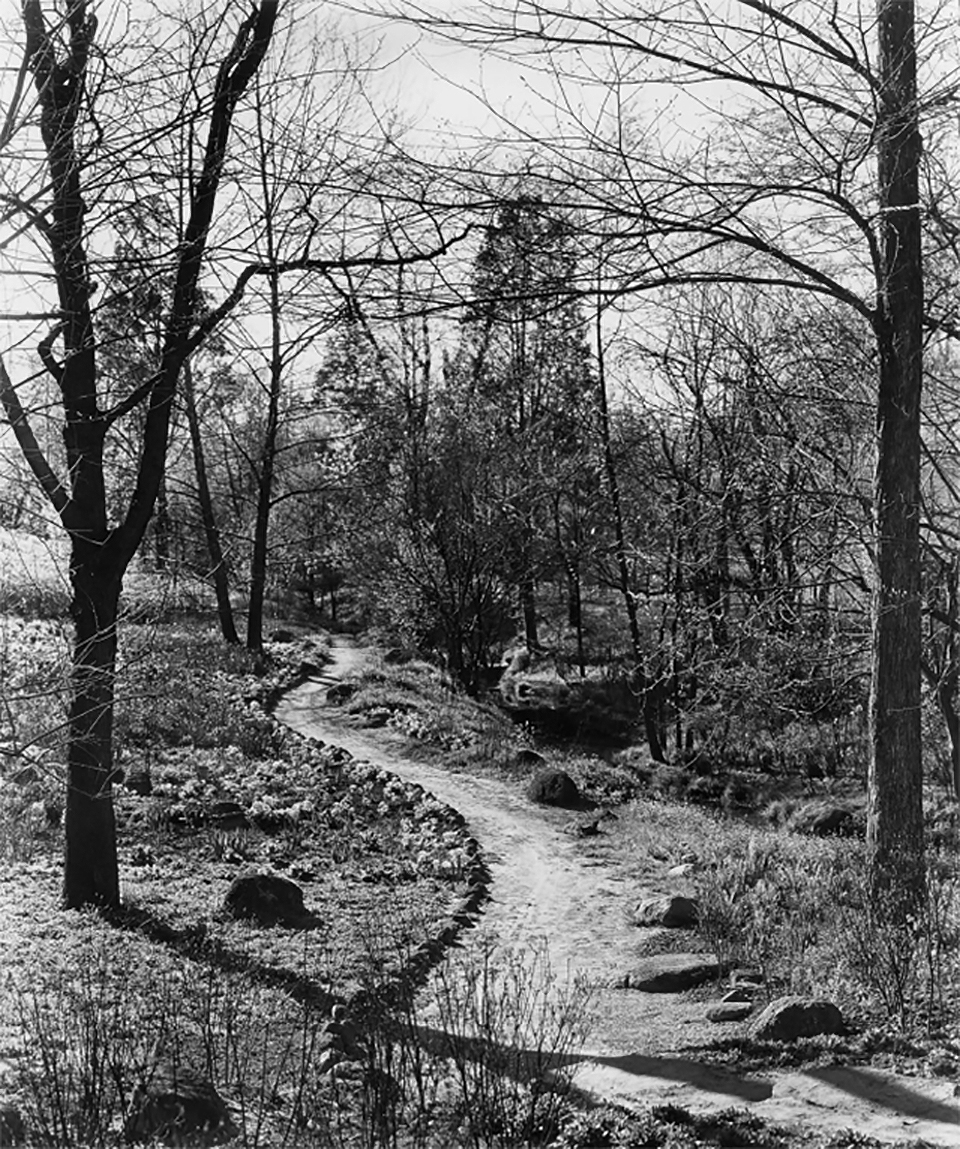 South Stream Path, Dumbarton Oaks Park, Washington D.C., circia 1922-1940. Photo courtesy NPS.
South Stream Path, Dumbarton Oaks Park, Washington D.C., circia 1922-1940. Photo courtesy NPS.
The adjoining park was likely inspired by William Robinson’s Victorian-era wild gardens. Farrand transformed a landscape of abandoned farm buildings and dumping grounds left behind by the previous owners to create “the illusion of country life within the city” with an array of constructed waterfalls, wildflower gardens, paths, ponds, woodlands, meadows, a stone bridge, and other architectural embellishments. She used marking stones to alert visitors to important elements in the landscape such as paths and vistas. A stone stairway topped by an arched gate led the way from the wild gardens back to the more formal estate. Within the park, special elements included a hillside carpeted with yellow forsythia, a beech grove, and curved paths winding around the hilly terrain planted with thousands of bulbs. She used native sedges and other grasses to create a ring of meadows with interspersed woodlands in carefully orchestrated conversation. Scenic vistas up to the house and across the park were important to Farrand, to create a sense of drama in the surroundings.
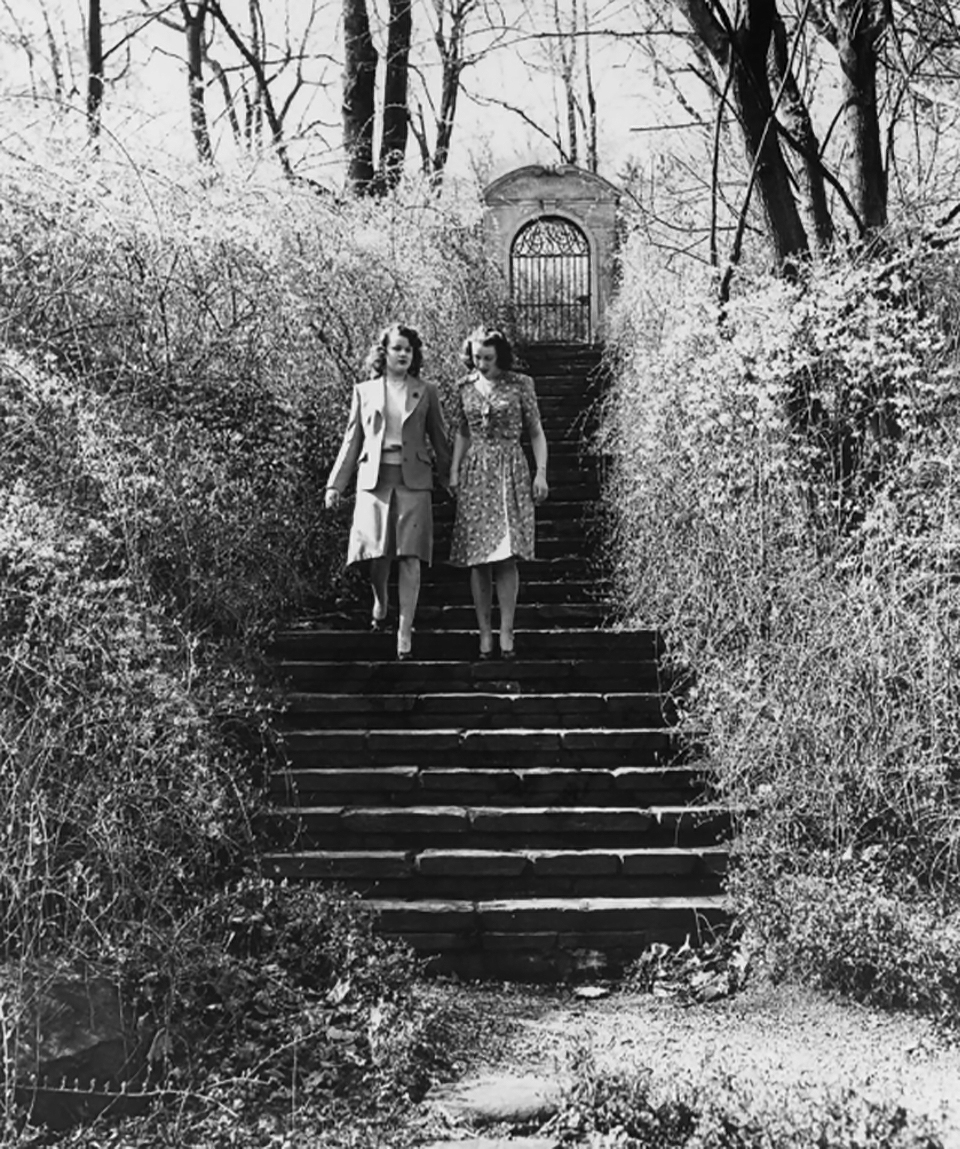 Forsythia Steps From South Stream Path, Dumbarton Oaks Park, Washington D.C., 1945. Photo courtesy NPS.
Forsythia Steps From South Stream Path, Dumbarton Oaks Park, Washington D.C., 1945. Photo courtesy NPS.
In 1940 Robert and Mildred Bliss gifted Dumbarton Oaks Park to the National Park Service (NPS) and their Georgian mansion and ten-acre formal garden to Harvard University. Farrand continued to be connected to the property until her retirement in 1951. Since then, however, and despite Farrand’s best efforts to set the park on good footing, it suffered from decades of neglect. Invasive vines choked historic trees and understory plantings, and silt and stormwater almost finished the job.
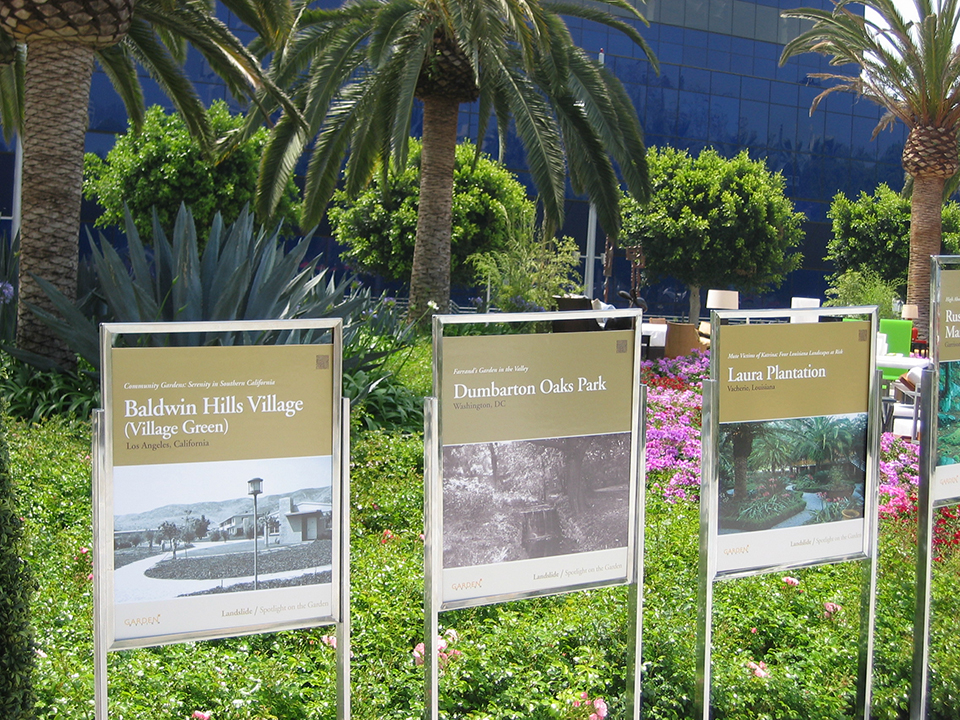
Launch of Spotlight on the Garden, Pacific Design Center, Los Angeles, CA, 2006. Photo by Charles A. Birnbaum, courtesy The Cultural Landscape Foundation.
Advocacy and Engagement
In 2006 Dumbarton Oaks Park was included in the 2006 Landslide report and exhibition Spotlight on the Garden, which noted: “Because Beatrix Farrand's work at Dumbarton Oaks appears to retain more integrity than any other surviving Farrand landscape, the preservation and protection of the stream valley portion of her original design are all the more important. Although recently stabilized in limited ways, the stream, which flows through the valley, its related structures, and the park's naturalistic plantings remain threatened because of four factors: Ever-increasing storm water flows caused by upstream urban and suburban development; deteriorated architectural features, overgrown and invasive vegetation; and lack of established funding for routine and seasonal maintenance (and for interpretation).”
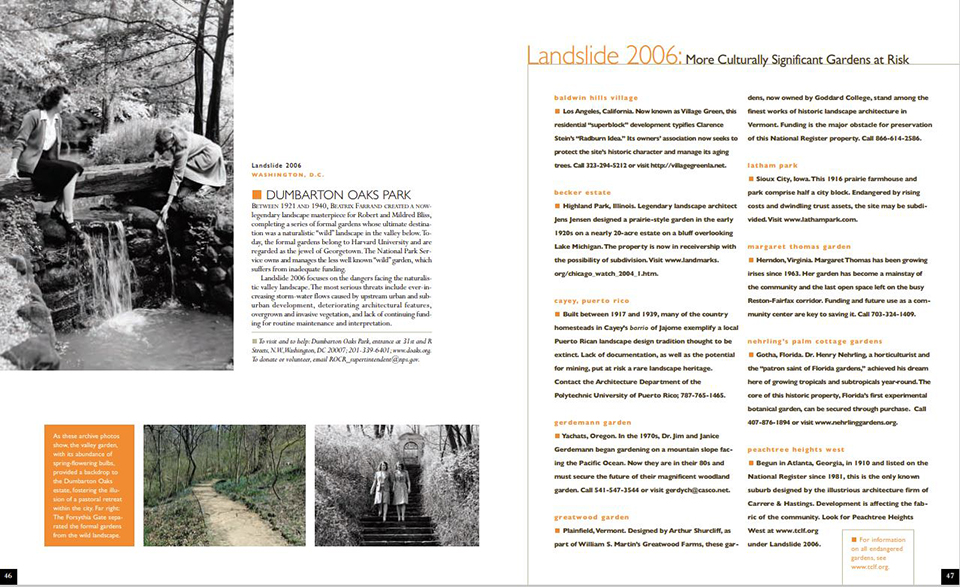 Saving America’s Garden Heritage, Garden Design, June 2006.
Saving America’s Garden Heritage, Garden Design, June 2006.
Reports, including one from the Historic American Buildings Survey in 1988, a Cultural Landscape Report from the NPS in 2000, and a Historic American Landscapes Survey in 2008, helped bring critical attention and a deeper understanding to the park, which was listed in the National Register of Historic Places in 2004. In 2010, the park was featured in TCLF’s inaugural What’s Out There Weekend program in Washington, D.C. with free expert-led tours of nearly 30 cultural landscapes.
In 2011 the Dumbarton Oaks Park Conservancy (DOPC) was formed to help preserve and restore Farrand’s vision. In 2012 the DOPC launched its first restoration project, the two-acre historic American Beech Grove at the park’s main entrance. The DOPC revealed Farrand’s design from a veil of invasive plants. Rehabilitation measures included the removal of invasive trees and shrubs, stormwater mitigation on steep slopes, and the restoration of the Old Stone Pump House. Informed by Farrand’s plant palette, thousands of native plants were returned to the park.
Building upon this early work, the Meadows Restoration project followed next in 2014. This transformed five meadow rooms used for grazing in Farrand’s era into eight acres of urban meadows comprising native warm season grasses to re-establish connections to the formal garden. This was a dramatic transformation from the park’s decline into a series of dark, impenetrable corridors to open landscape spaces and sweeping views and re-established vistas to the formal garden.
In 2015 the East Falls Dam (designed by Farrand) was stabilized using gabions as stormwater triage and the restructuring of the dam’s original stone wing walls. It has been the DOPC’s goal since the onset to restore the entire system of eighteen water weirs that Farrand designed. The backbone of the park’s design is the stream valley which is most intensely impacted by perpetual stormwater issues.
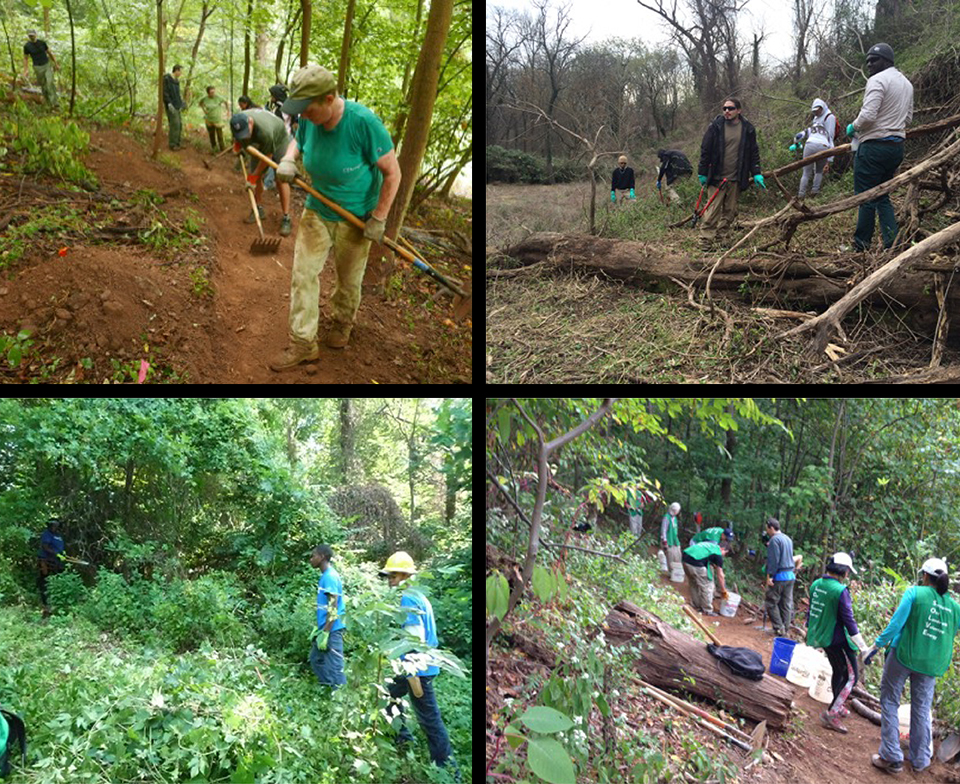 Restoration Projects at Dumbarton Oaks Park, Washington D.C., 2013-2016. Photos courtesy of DOPC.
Restoration Projects at Dumbarton Oaks Park, Washington D.C., 2013-2016. Photos courtesy of DOPC.
In 2017 the DOPC began master planning for stormwater remediation in the upper northwest region of the park with site-wide implications. Working with landscape architect, David Kamp, design strategies targeted healing the land and beginning the process of building community – ecologically diverse, thriving natural communities and engaged, dynamic human ones. The goal was to expand opportunities for daily enjoyment while actively engaging the public in the stewardship process. This effort involves multiple stages of work, starting with a focus on restoring nature.
In 2020 the park was again featured in TCLF’s Landslide report and exhibition Women Take the Lead, which noted the exceptional progress made by the DOPC, and the work that still needed to be done. In the park’s centennial year, 2021, the Stream Valley Restoration Master Plan was completed in collaboration with Larry Weaner Landscape Associates. In 2021, funding was secured for the first phase of this project, a robust plant layer which will support the stabilization of path and stream edges, reduce erosion, and increase plant diversity. Future funds will ensure the restoration of Stream Valley’s historic architectural features.
In 2022 the public was invited to experience the revitalization efforts during a What's Out There Weekend again hosted in Washington, D.C. Several attendees recalled visiting the park a decade earlier and marveled at the DOPC’s achievements.
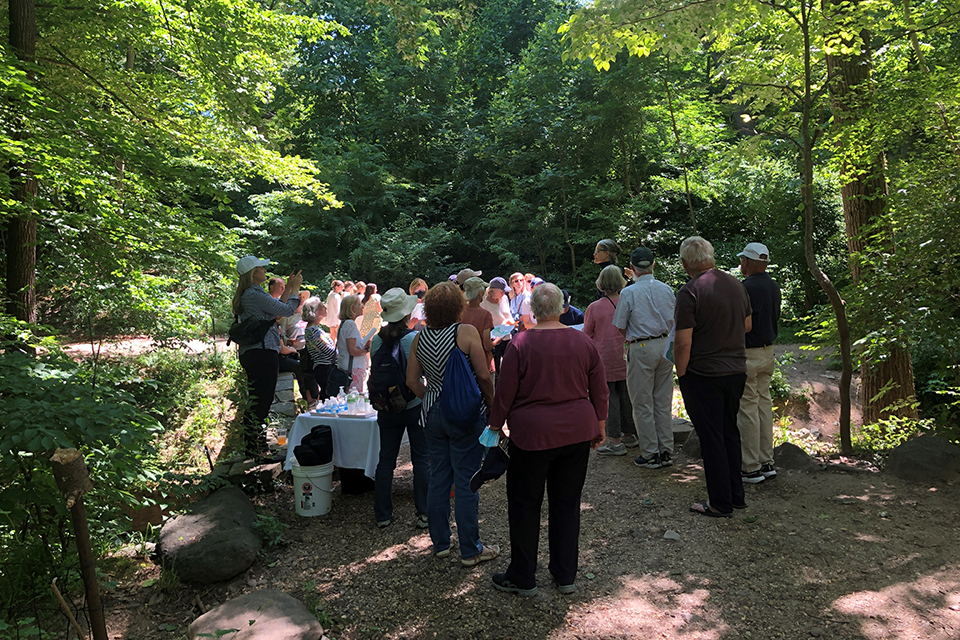 What’s Out There Weekend Washington, D.C., Dumbarton Oaks Park, Washington D.C., 2022. Photo by Celia Carnes, courtesy The Cultural Landscape Foundation.
What’s Out There Weekend Washington, D.C., Dumbarton Oaks Park, Washington D.C., 2022. Photo by Celia Carnes, courtesy The Cultural Landscape Foundation.
Currently, the DOPC has a maintenance master plan in place to secure the investment and artistic value of the wild garden. Pipeline projects underway include the Gray Arbor Memorial garden folly restoration, which will be celebrated with the installation of Raymond Kaskey’s bas-relief Arcadia in 2024. The fundraising for the restoration of all the historic built garden structures is underway. In 2023 the DOPC received the D.C. Sustainability Award, which noted that the “stewardship that this garden inspires is a great testament to the vitality of this open space in the nation’s capital.”
Selected Resources
“Breathing New Life into Dumbarton Oaks Park,” October 19, 2015
Harriet Pattison on Design: Artists and Heroes
Judith Tankard on Beatrix Farrand
Selected Media Coverage
“Conservancy Formed to Rescue Dumbarton Oaks Park,” Adrian Higgins, The Washington Post, April 13, 2011
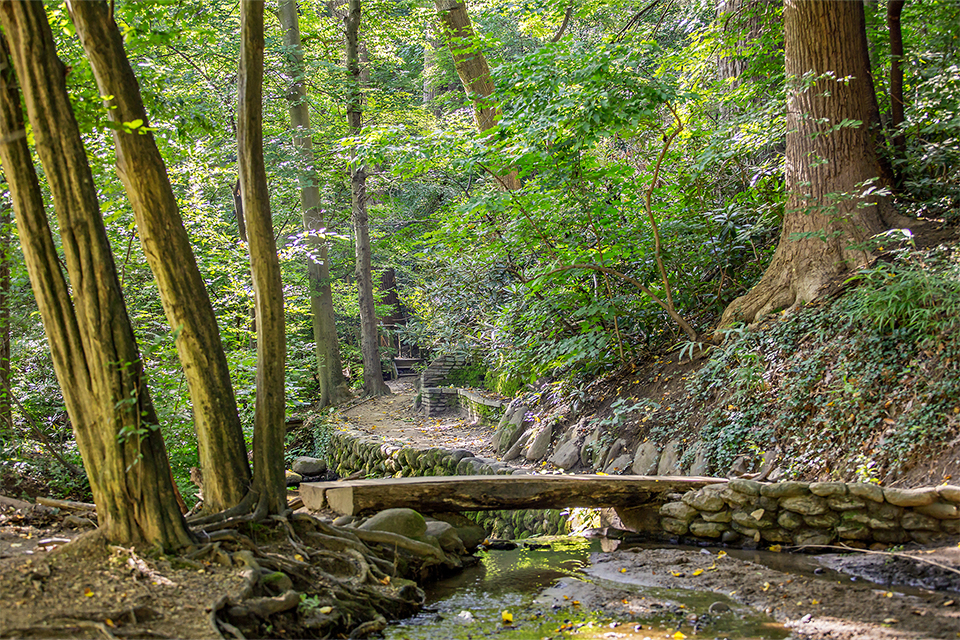
-
Dumbarton Oaks Park, Washington, D.C., 2020. Photo by Allen Russ.
